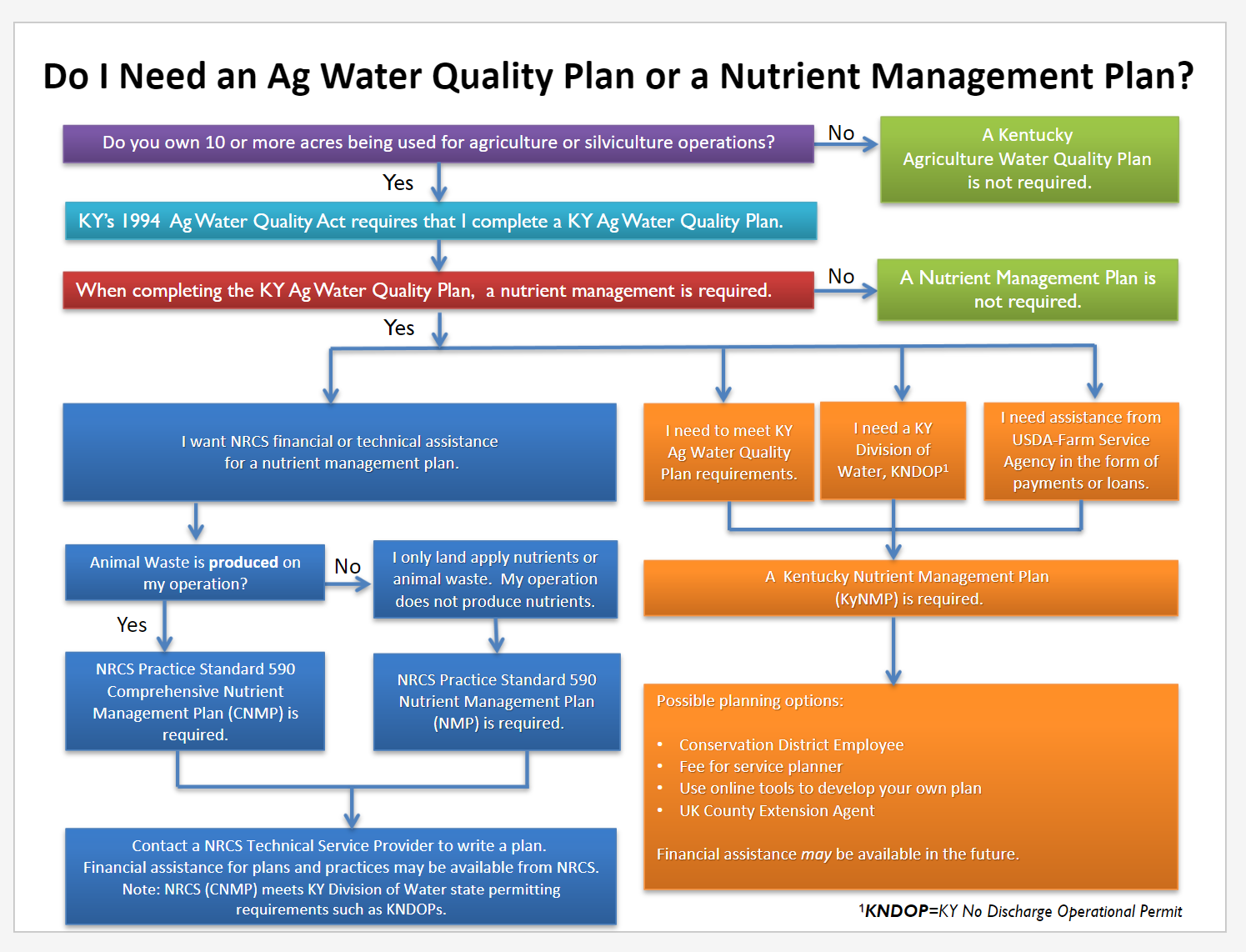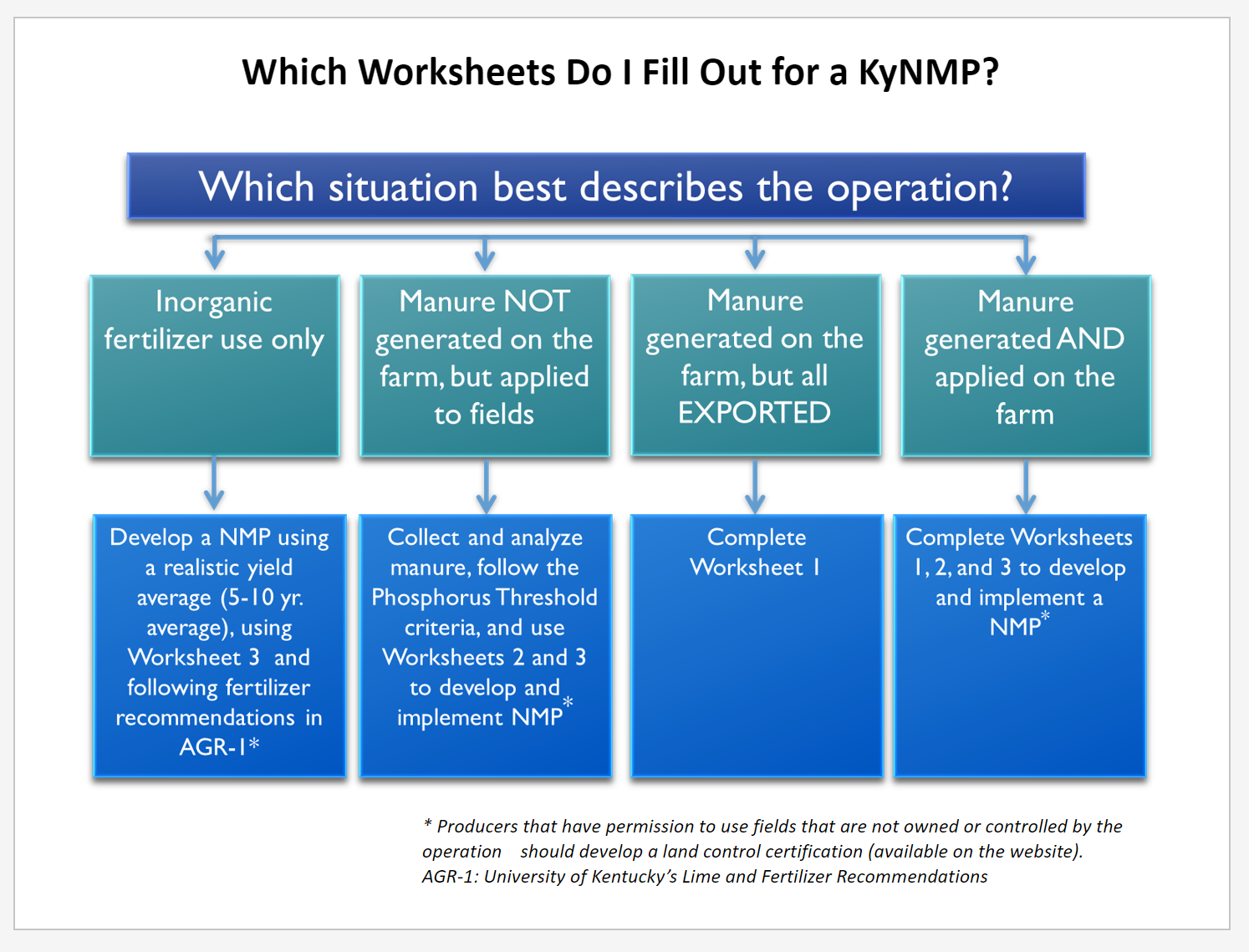Nutrient Management
Kentucky Nutrient Management Planning
The Kentucky Agriculture Water Quality Act states that landowners with 10 or more acres who land-apply plant-available nutrients or who export manure must develop and implement a Nutrient Management Plan as part of their Agriculture Water Quality Plan. If a Kentucky Nutrient Management Plan (KyNMP) is required, the following tools and resources can be used to develop your plan.
Resources on this site can help farmers assess their operation and identify best management practices to include in their Nutrient Management Plan. Assistance to implement your water quality & nutrient management plans can be obtained by contacting your local Conservation District Office or your local Cooperative Extension Service Office.
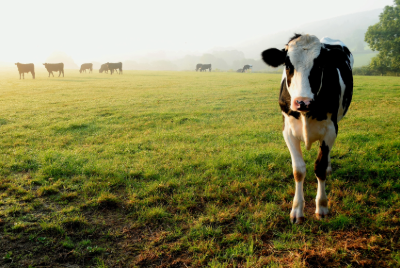
KyNMP Examples & Worksheets
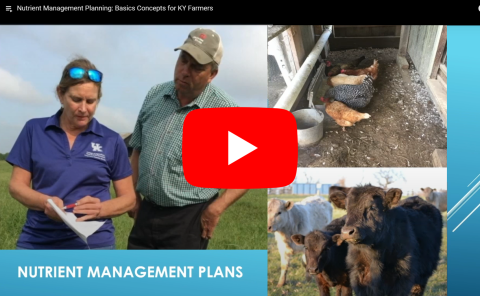
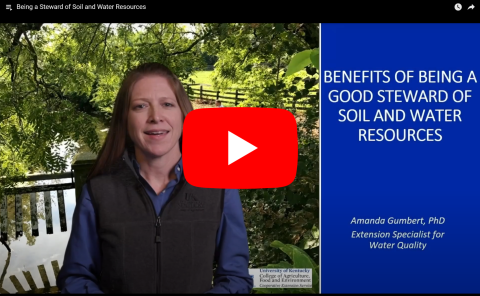
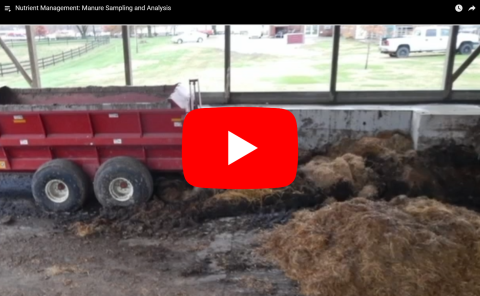
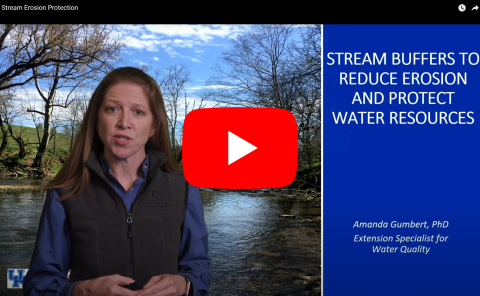
KyNMP Extension Publications and Factsheets
Alternative Water Sources: Developing Springs for Livestock
Best Management Practices for Water Quality: Filter Strips Factsheet
Best Management Practices for Water Quality: Grassed Waterways Factsheet
Drinking Water Quality Standards for Cattle
Enhanced Vegetative Strips for Livestock Facilities
Field Guide to Best Management Practices for Timber Harvesting in Kentucky
Lime and Nutrient Recommendations
Pasture Feeding, Streamside Grazing, and the Kentucky Agriculture Water Quality Plan
Pervious Concrete as a Flooring Material for Horse Handling Areas
Riparian Buffers: A Livestock Best Management Practice for Protecting Water Quality
Sinkhole Management for Agricultural Producers
Using Dry Lots to Conserve Pastures and Reduce Pollution Potential
Using Weep Berms to Improve Water Quality
Woodland Winter Feeding of Cattle: Water Quality Best Management Practices Publication
